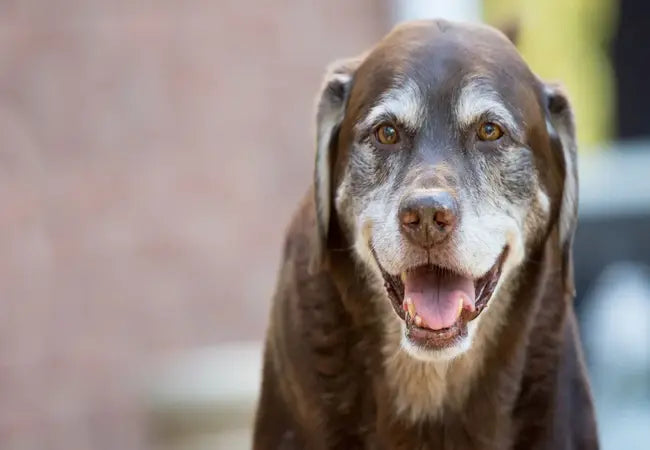2025 Vet Guide: Understanding & Treating Cataracts in Dogs 🐶👁️

In this article
2025 Vet Guide: Understanding & Treating Cataracts in Dogs 🐶👁️
By Dr. Duncan Houston BVSc
Noticing a cloudy or milky film in your dog’s eye is concerning—and for good reason. Cataracts are a leading cause of vision loss in dogs, but with early detection, veterinary intervention, and supportive care, many dogs can regain sight and quality of life. Let’s dive into causes, signs, testing, treatment, and how to support your pup’s eyesight with Ask A Vet, Woopf, and Purrz.
🔍 1. What Are Cataracts?
Cataracts occur when the lens of the eye becomes opaque, scattering light and preventing it from reaching the retina. This cloudiness ranges from a slight blur to total lens opacity, affecting one or both eyes.
👁️🗨️ 2. Common Causes
- Genetics & breed predisposition: Common in breeds like Cocker Spaniels, Poodles, and Boston Terriers.
- Aging (senile cataracts): Lens proteins degrade over time.
- Diabetes mellitus: Excess glucose in the lens triggers rapid cataract development.
- Trauma or inflammation: Eye injury or uveitis can trigger opacification.
- Congenital/juvenile cataracts: Present early in life due to genetics or developmental issues.
🔎 3. Signs & Stages of Cataract
- Cloudy or whitish lens—visible milky “disc” behind the iris.
- Poor sight in dim light, bumping into objects, hesitation on stairs.
- Stages: incipient (small spot), immature (10–99% lens involvement), mature (entire lens), hypermature (liquified lens—risk of complications).
- May be pain-free unless complications (uveitis, glaucoma) develop—look for redness or squinting.
🩺 4. Diagnosis & Veterinary Evaluation
- Comprehensive eye exam, including pupil dilation.
- Blood tests to detect diabetes, inflammation, or infection.
- Ocular imaging and intraocular pressure testing to rule out glaucoma.
- In mature cataracts, an ultrasound may evaluate deeper structures.
🔧 5. Treatment Options
5.1 Monitoring (“Benign Neglect”)
For early or non-progressive cases, regular monitoring may be enough—cataracts that don’t interfere with vision or comfort may not need immediate treatment.
5.2 Managing Inflammation & Preventing Glaucoma
Eye drops (NSAIDs or corticosteroids) may reduce inflammation. However, they do **not** reverse cataracts—they help delay complications.
5.3 Surgery: Phacoemulsification
The gold standard: ultrasonic emulsification of the lens and replacement with an intraocular lens (IOL). Success rates are ~85–95% in uncomplicated cases.
Best results occur when surgery is performed **before** mature cataracts develop or complications arise.
Typical cost ranges from **$2,700 to $4,000**, depending on severity and whether one or both eyes are treated.
5.4 Post-Surgical Care & Risks
- Anti-inflammatory/antibiotic drops are essential post-op.
- Use of e-collar to prevent eye injury during healing.
- Possible complications: uveitis, glaucoma, lens capsule issues, retinal detachment.
- Follow-up visits ensure healing and detect complications early.
🏠 6. Home Care & Environmental Adjustments
- Improve home lighting, use textured mats, avoid rearranging furniture.
- Keep water dishes and leads placed consistently to reduce disorientation.
- Monitor for worsening signs—cataract complications often reveal themselves quickly.
🧰 7. How Ask A Vet, Woopf & Purrz Can Help
- Ask A Vet: Remote consultations to track cataract progression or review surgical readiness.
- Woopf: Set reminders for eye drop schedules and vet follow-up appointments.
- Purrz: Log vision changes, mobility issues, and potential triggers for careful review.
📚 8. FAQ
Q: Can cataracts be reversed with drops or supplements?
Unfortunately, no—there’s no medication shown to reverse cataracts. Drops only help manage inflammation or delay glaucoma.
Q: Isn’t nuclear sclerosis just like cataracts?
No—nuclear sclerosis causes a bluish haze but **does not** significantly affect vision. Cataracts appear white and impact light transmission.
Q: Which dogs shouldn’t get surgery?
Dogs with uncontrolled systemic illness, advanced ocular disease, or anesthetic risk factors may not be suitable—careful evaluation is needed.
💬 9. Pet-Owner Perspective
One owner shared:
> “Our diabetic lab developed cataracts fast. Early surgery saved her sight and renewed her confidence—she’s back to being playful!”
🏁 10. Final Thoughts from Dr Houston
Cataracts in dogs shouldn’t mean giving up vision. From early spotting to successful surgical intervention, proactive care can preserve sight and enhance quality of life. With Ask A Vet’s guidance, Woopf’s reminders, and Purrz’s logs, you’re well-equipped to navigate the path ahead—and restore your dog’s clarity and joy in 2025.
Download the Ask A Vet app for expert assessments, surgery planning, and post-op monitoring tools. 🐶📱
AskAVet.com – Restoring dog vision, one lens at a time. 💙






